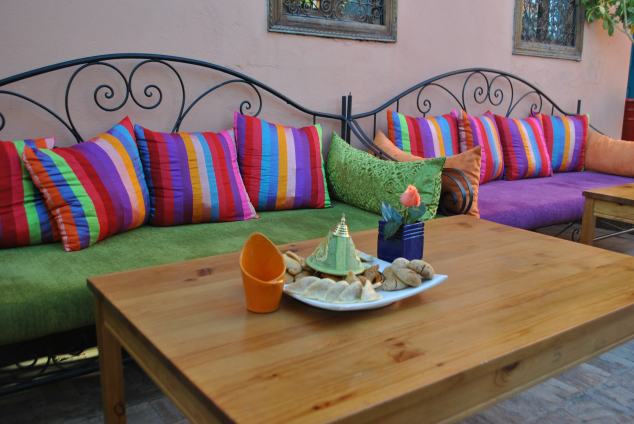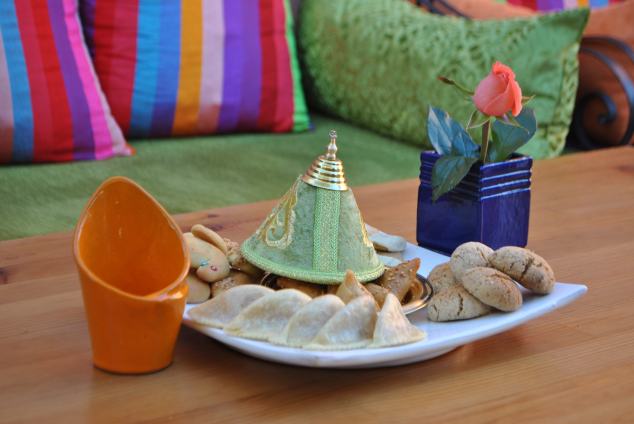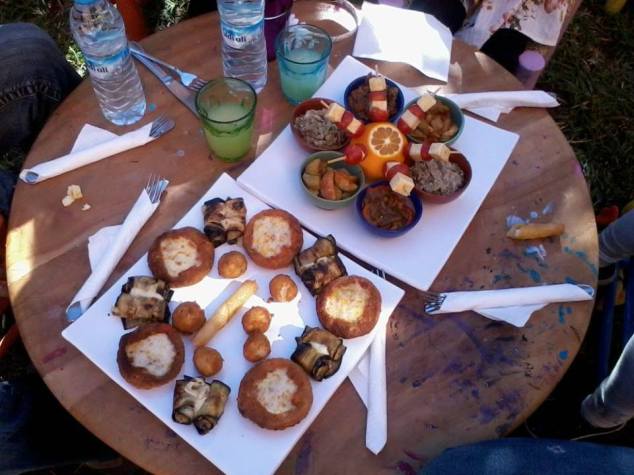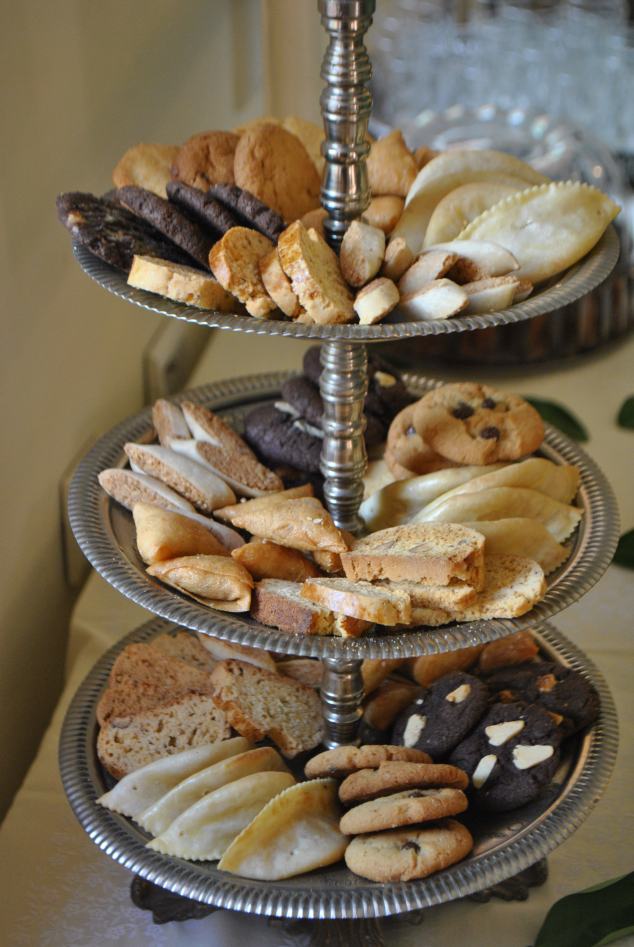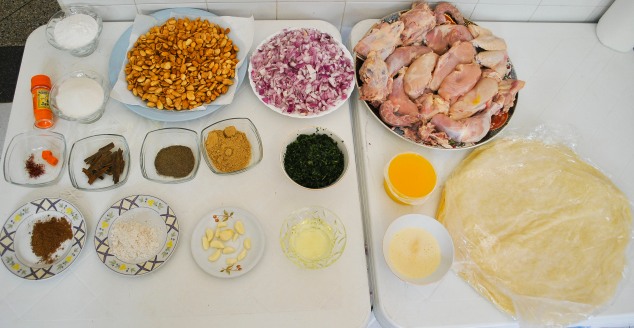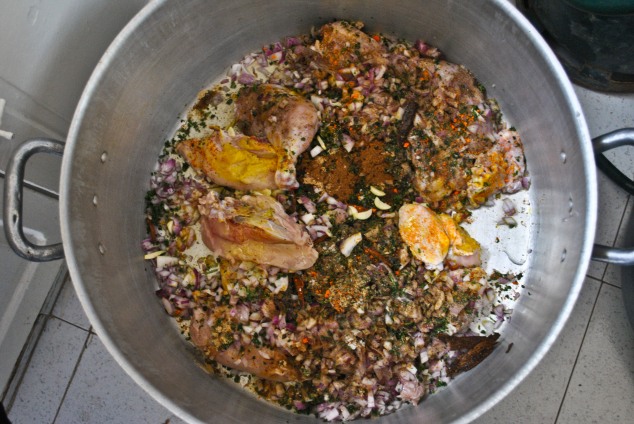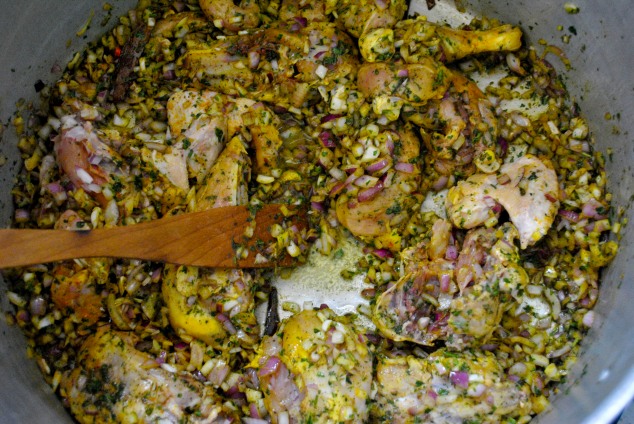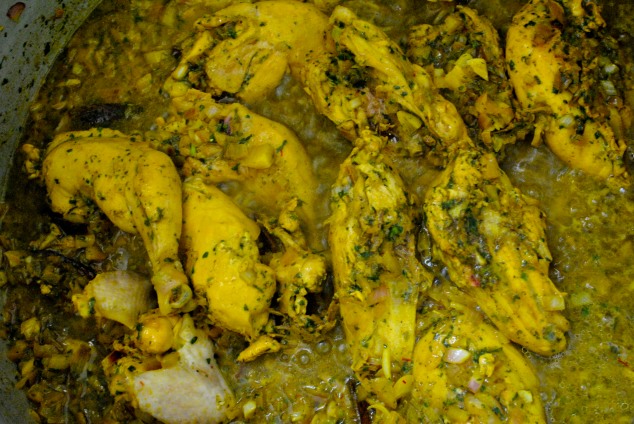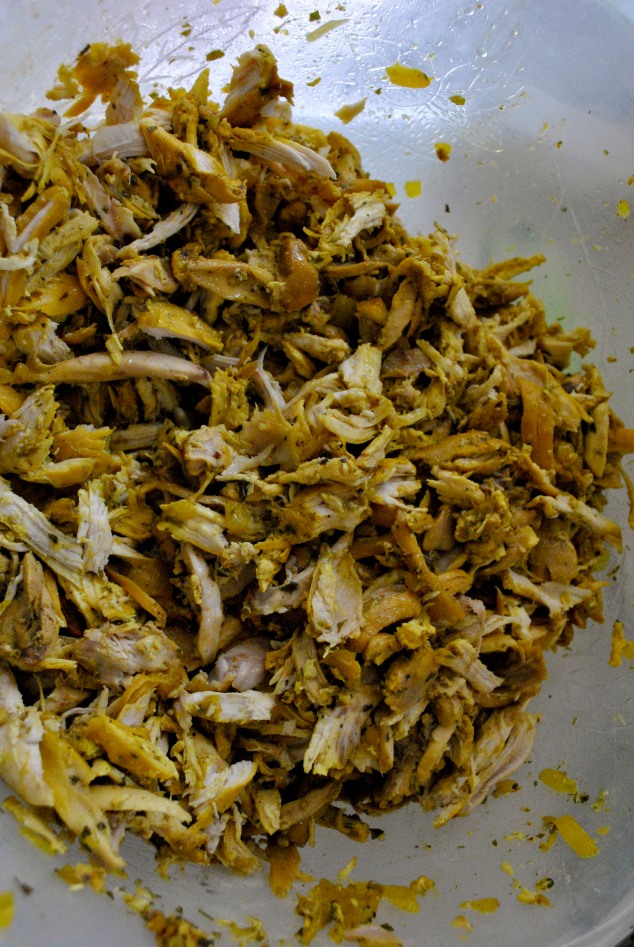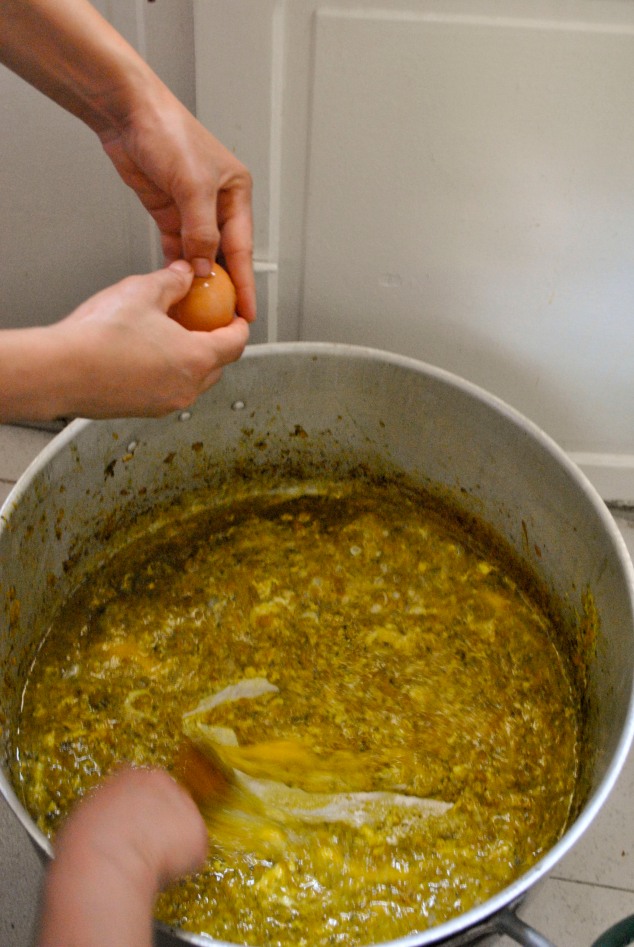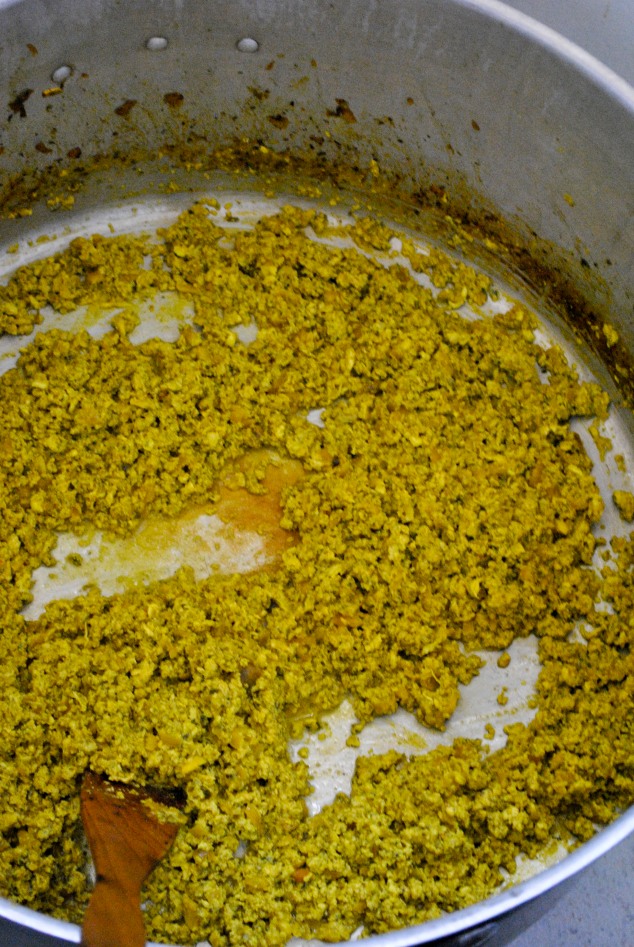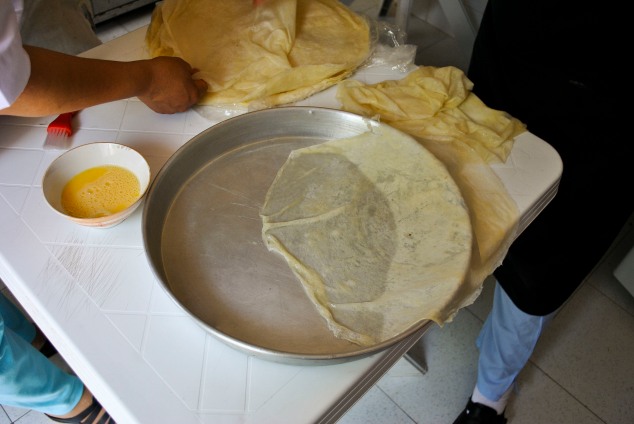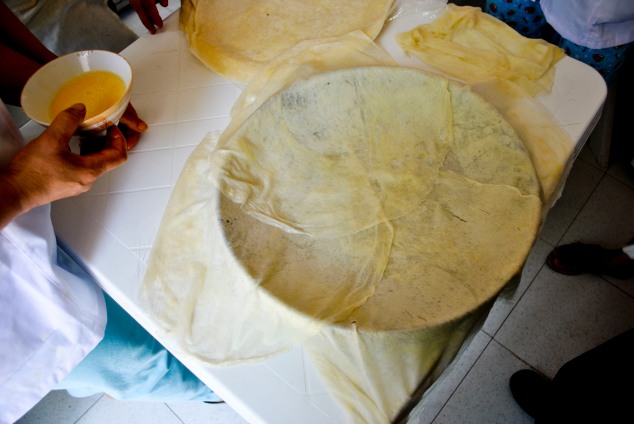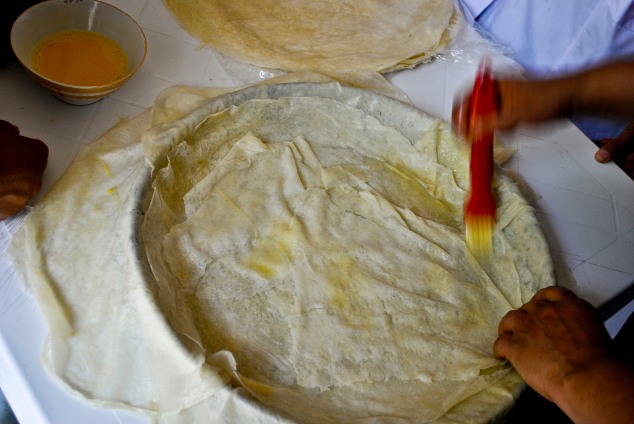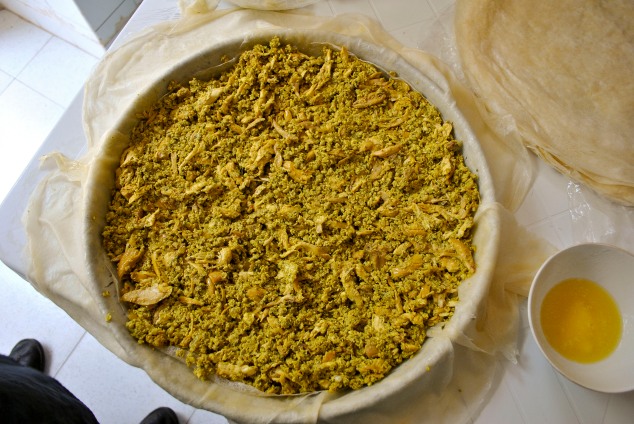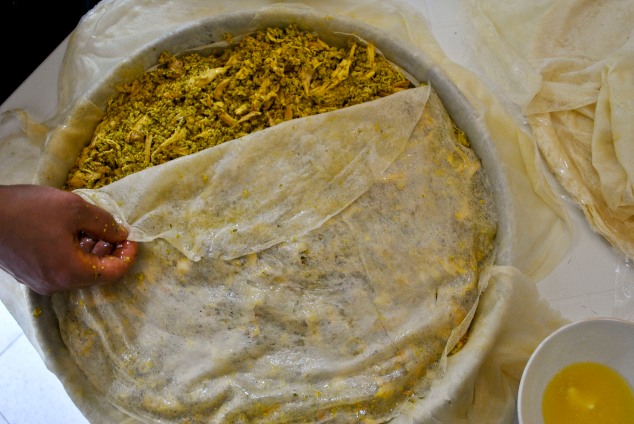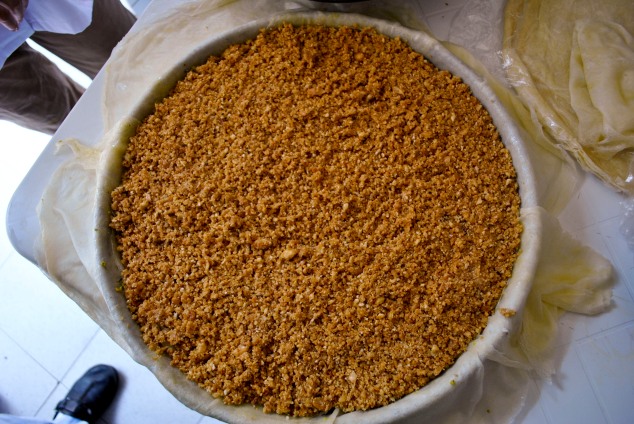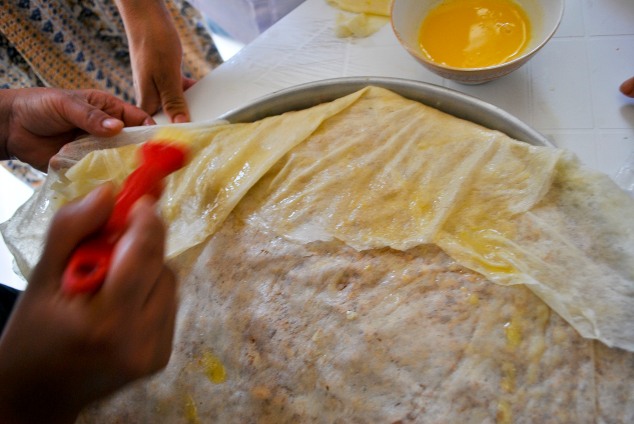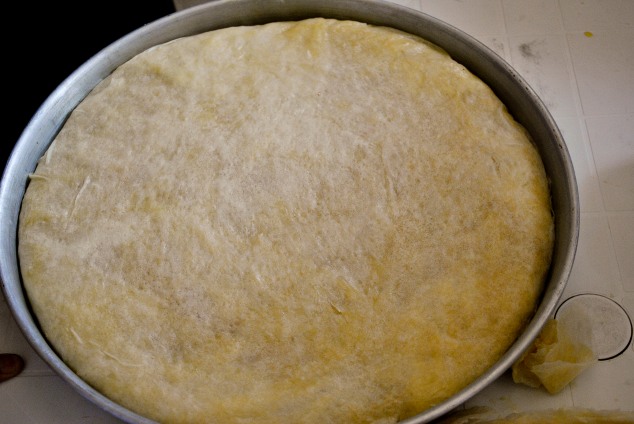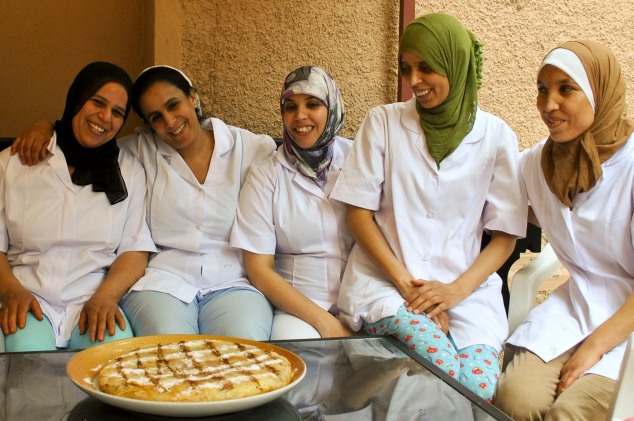Starting the Amal Center was a difficult endeavor, I can’t explain why exactly I did it, I did not have a very clear plan on how it would all develop, I did not have answers to people’s most basic questions, like “how long will the women train there?” I would freeze up and give vague answers like “well, we are still in the experimental stage trying to find a successful formula…”
I did not anticipate also the strain it would have on my family, of course no one could foresee that my daughter would develop a bone cyst that we discovered about 10 days after I signed the lease for the Amal Center, and that would put her on crutches for the next 5 months. I would never wish it on anyone to undertake a major remodeling job AND have your daughter need emergency surgery and a metal plate inserted. I felt that I had made an internal promise and engagement to help women who have had lives much more difficult than my own, but ultimately found myself often torn between the responsibility I felt to honor that promise, and the responsibility I felt to honor the more fundamental promises I have towards my husband and children. My husband is a good and patient man, and I feel like he has been just as responsible for the manifestation of the Amal Center as I or anyone else has. He works long hours to allow me to follow this weird and inexplicable dream to create, from scratch, a massive institution to empower women. He supports me in this, and often provides a realistic perspective to counter my “woman’s intuition” approach. Did I also mention that when you are the president of a non-profit, you don’t get paid. But you get the cool perk of being the president of something, which is totally worth the blood, sweat and tears (please pick up on the sarcasm). Just time-wise, the Amal Center needed as much as I could give it, and so did everything else important to me. Valuable relationships and friendships suffered damage because of this. My management and communication skills (my least developed skill set) were tested to the extreme.
However as you can see all these sentences are in the PAST tense, not because the Amal Center fell apart, au contraire. At the most crucial time, deliverance appeared. Help came in many forms: an experienced board of directors came together (which would have been so valuable from the beginning: don’t work alone is a big lesson learned), volunteers took over chunks of the work (delegate!), and a life-saving grant was awarded to the Amal Center by the Swiss Drosos Foundation (apply for any and all grants, sooner or later someone will believe in what you are doing and want to help!). All of a sudden, a very skilled and experienced director was hired to run the Amal Center. Another talented and gracious person came on board to take care of communications, which is basically telling the story of who we are and what we do to many audiences through many mediums. over and over. Soon we will also have a social worker (!!!) to screen potential trainees and monitor their progress.
Now if you ask me all your trick questions like “how long will the women stay at the Amal Center?” or “how are the women selected?” or “what happens to them afterwards?” I no longer need to bob and weave through them, there are actual solid, well-thought out answers. The women will spend 4 months in training. The candidates are selected either through our partnerships with other local non-profits, or based on an application and interview process to determine socio-economic need. Priority is given to mothers who are the primary support of their families (widows, divorced, single mothers) and to women who were child maids. The women also need to demonstrate a degree of motivation and the desire to enter the job market. While they are at the Amal Center, the trainees will learn: Moroccan cooking, “Cuisine Internationale” (will show you photos in a bit), baking and pastry-making, waiting tables. And they will pick one language-based course to study: either Arabic literacy, French or English. In addition, we are going to be having workshops on what is referred to in the field as “soft skills”, such as life-planning, empowerment, non-violent communication, reproductive help, and this thanks to a working partnership with Search for Common Ground, a Rabat-based international NGO. Simultaneously, our Amal Center team will be networking with potential employers to facilitate job placement for the women once they graduate from the Amal Center. Insha Allah!
Right now we are in transition mode full-swing. The entire team is getting used to the new structure and putting everything in place to ensure that when the new trainees come in, they get a really top-quality training experience. 5 of the women who started out as trainees and made it through some of the rocky transition times are now full-time staff members with work contracts and benefits. And also we saw that it would be impossible to move forward without a clear leader in the kitchen, so we hired a very capable chef (male, I think that also makes a difference and helps balance dynamics). On the one hand, we’ve come a long way and are now working with a very clear objective. On the other hand, I’m impatient to actually get down to the training and job placement! We have not even gotten to the real work.
And in the meantime, we also have a restaurant to run. The restaurant has been a huge success (alhamdulilah). In November (pre-grant) we served an average of 13 people a day. In December that number went up to 29! I think January’s going to show even more of an increase. Friday is by far the busiest day: couscous day! The number of customers on Friday has been gradually increasing until we broke 100 recently. Here’s what some of them have to say on tripadvisor Mostly people love the place/food/social concept (a few people were not feelin the love though).
Speaking of links, the Amal Center is having its (annual?) fundraiser, an effort that is spearheaded by some of our volunteers. Anyone who wants to be a part of our humble endeavor here in Marrakesh can use this rockehub link which will be up only until the end of January.
New garden couches:
The ceramic teap-cups are part of a donation from a local artisan businessman. He gave us hundreds of pieces. Those are the kind of amazing heart connections that happen.
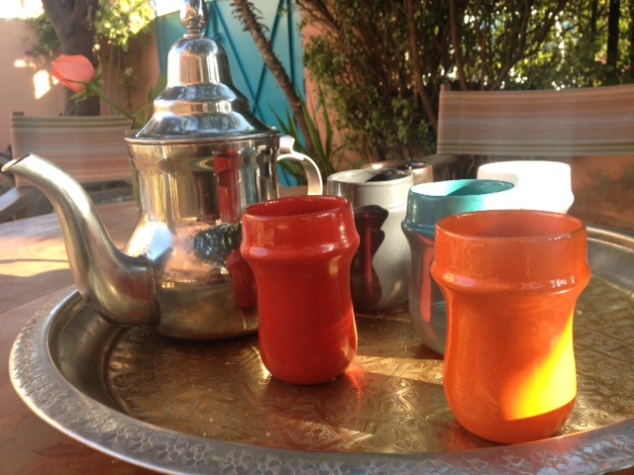
It tastes like deviled eggs, and salad nicoise.
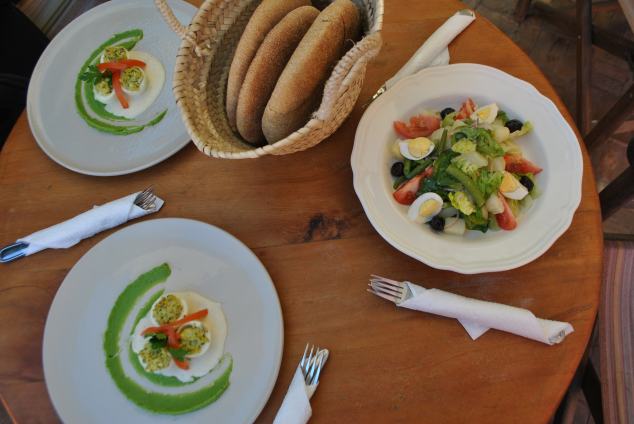
This is what I want to eat for every meal:
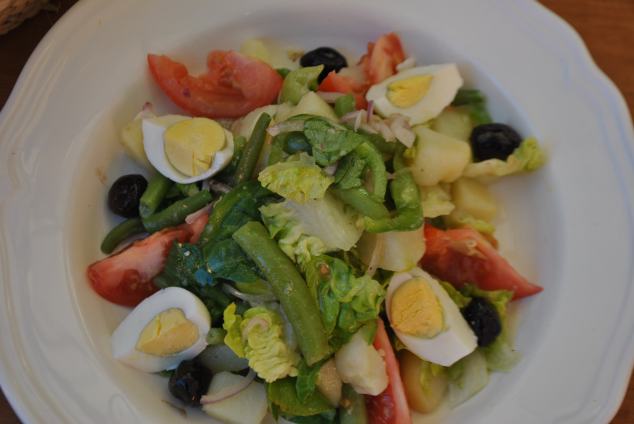
A “light snack” for the mothers and toddlers weekly class.
Wow. I don’t even know what this is:
The team that is behind all this amazing yumminess:
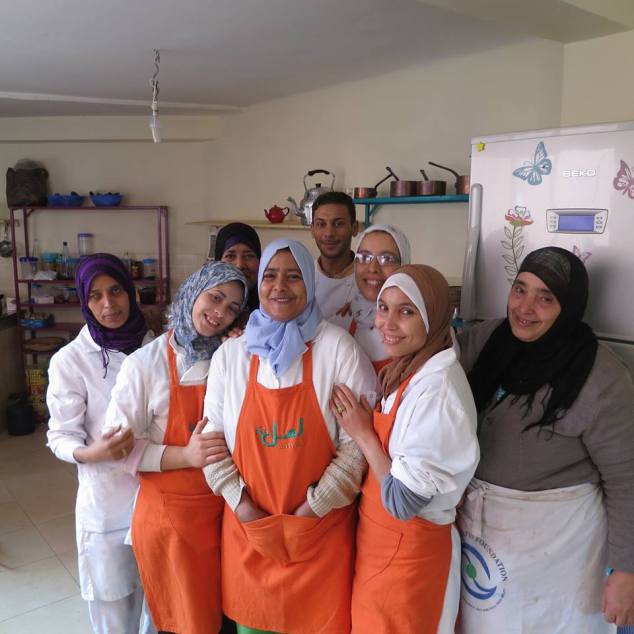
And this! I could also eat this…a lot. Seafood bastila:
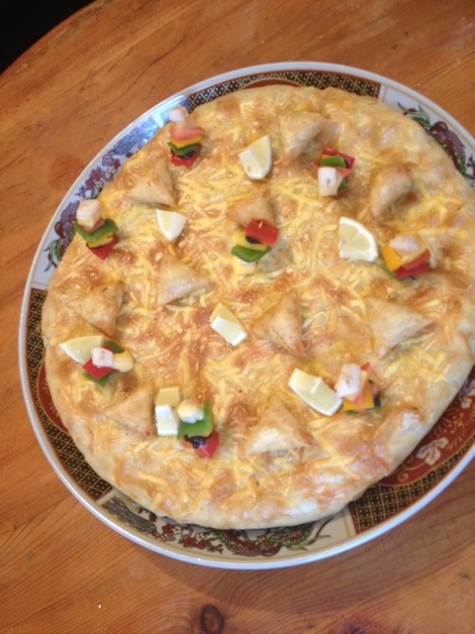
Again, no idea what any of this is, sigh…
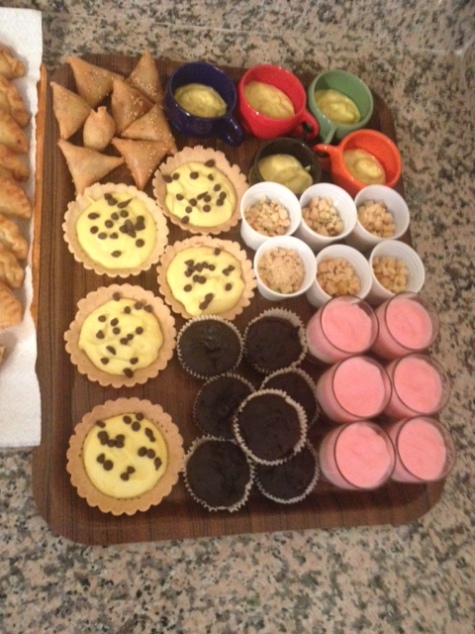
Cooking lessons happen in a sort of informal way:

The Amal team had a booth at a local fair, another opportunity for the women to display and sell their goods and mostly to become confident in a rather intimidating setting (a good number of the fair-goers were European).
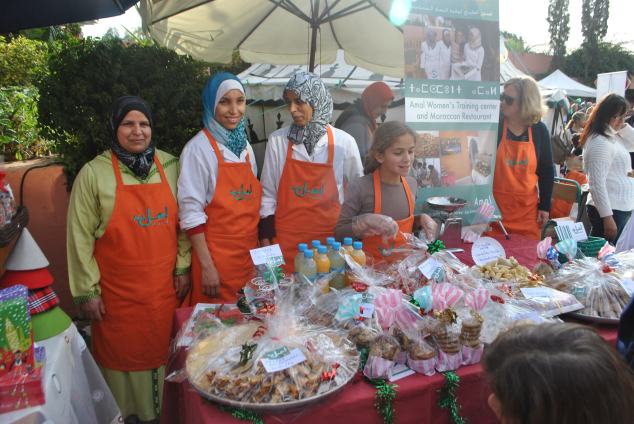
And here is that donation link again http://www.rockethub.com/projects/35895-expansion-efforts-for-moroccan-women-s-center-working-to-employ-empower . If you made it to the end of this post, thank you dear ones near and far for reading first draft material!

